In photos and video: Youth-led solutions to combat trafficking in women for forced criminality in South-East Asia
Date:
By empowering youth with knowledge and engaging them in developing prevention tools, UN Women and partners are supporting youth-driven initiatives to bring fresh perspectives to combat trafficking for forced criminality and other cyber-enabled harms.

Trafficking for forced criminality, especially associated within online scam centres, is a growing concern in South-East Asia.
Many victims of this form of trafficking are formally educated and technologically skilled and forced to carry out cyber-enabled crimes.
Although most trafficking victims for this purpose are young men, a 2023 report from the UN Office on Drugs and Crime revealed that trafficked women who do not meet their sales quotas are threatened with being sold to brothels and other locations for sexual exploitation, with some cases involving girls under the age of 18.
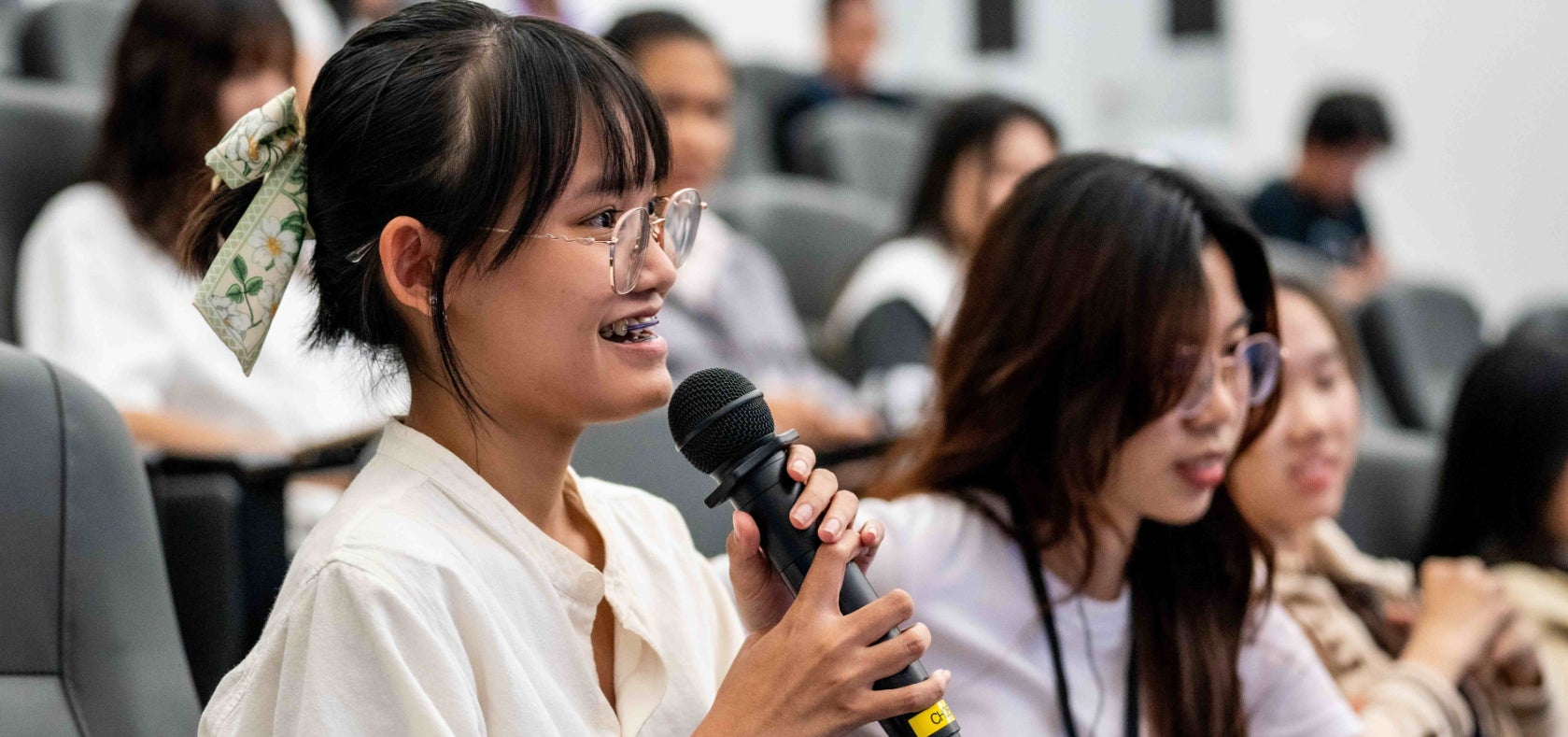
To effectively address this complex issue, a shift beyond mere technological solutions is essential. It requires the transformative energy and meaningful participation and leadership of youth, particularly young women, which is a vital part of the Women, Peace and Security (WPS) agenda.
Despite being tech-savvy and familiar with the Thailand-Myanmar border area, young people – especially young women – are often excluded from contributing solutions to trafficking for forced criminality, due to factors such as social barriers or gender inequality.
That’s why UN Women, in partnership with the FOCUS Foundation, Center for Girls Foundation and Thai universities, and supported by the Government of Japan, has been working with students and other young people to address these emerging critical security issues along the Thailand-Myanmar border.
This collective effort aims not only to reduce trafficking and protect vulnerable populations, but to introduce innovative youth-led solutions, ensuring a whole-of-society approach. For example, the partners have organized various youth dialogues at universities in northern Thailand.
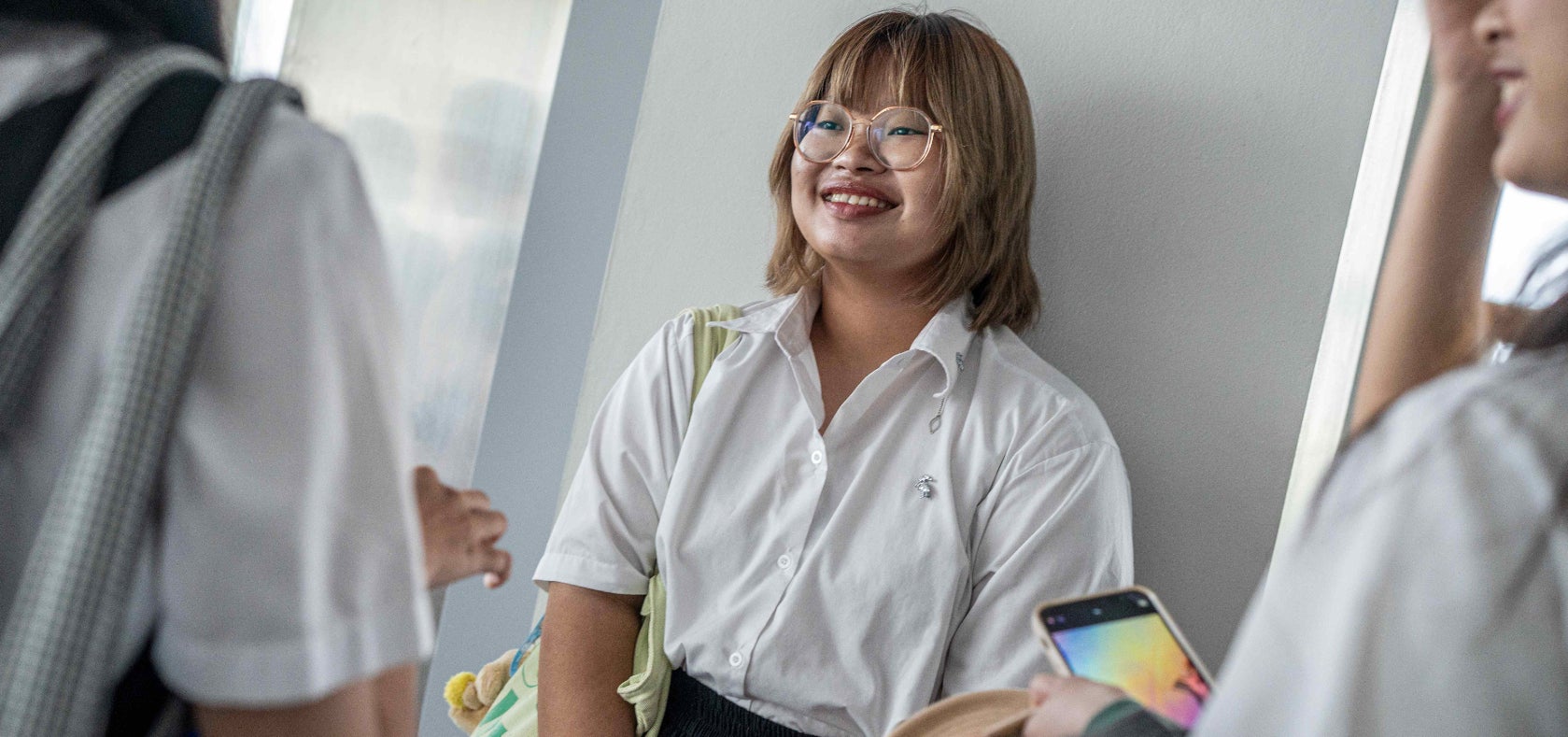
Phaephloi Saengbunrueang, known as ‘Satang’, was among the participants at a Youth Dialogue on Trafficking for Forced Criminality held at Chiang Mai University.
This session provided a unique opportunity for young people to explore the intersections between the WPS agenda and youth participation. It also served as a platform to hear youth perspectives and explore their insights and ideas on preventing trafficking in persons for forced criminality and identifying innovative and concrete solutions.
“I have learned about the alarming problem of trafficking for forced criminality, which often goes unnoticed,” says Satang, a fourth-year student from the Faculty of Mass Communication.
“Many people think it’s just scamming and isn’t a big deal, without realizing that these individuals could be victims of trafficking, and that many of them could be women and girls who are subject to online sexual exploitation and abuse. We need to educate the community about this issue.”
Satang has mobilized her networks to build resilience against cyber-enabled harms against women and girls and trafficking for forced criminality, and has reached more than 300 students (80 per cent of whom were women) in-person at her university and even more online.
Through digital technology, such as immersive art and social media, Satang, her peers and project partners have been sharing important prevention tips and spreading powerful narratives that shift the focus from victim-blaming to collective responsibility for the protection of victims and survivors.
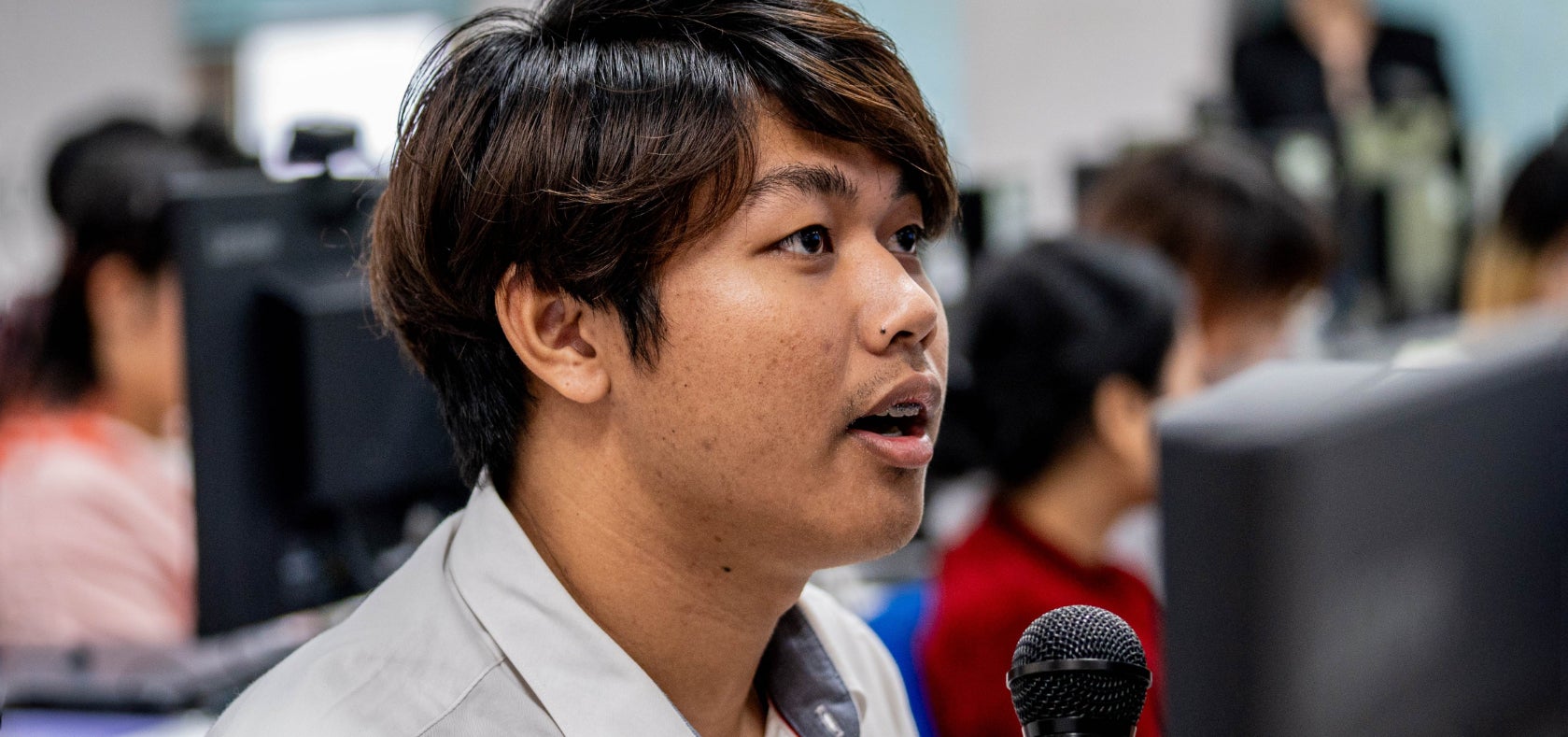
Satang’s journey underscores the crucial role of youth, spotlighting the power of young women’s leadership to instigate meaningful change and, importantly, also engaging male allies in co-developing solutions.
Young men were also active participants in the youth dialogues and creative workshops held at universities in northern Thailand, at which the WPS framework was used to inspire gender-inclusive responses.
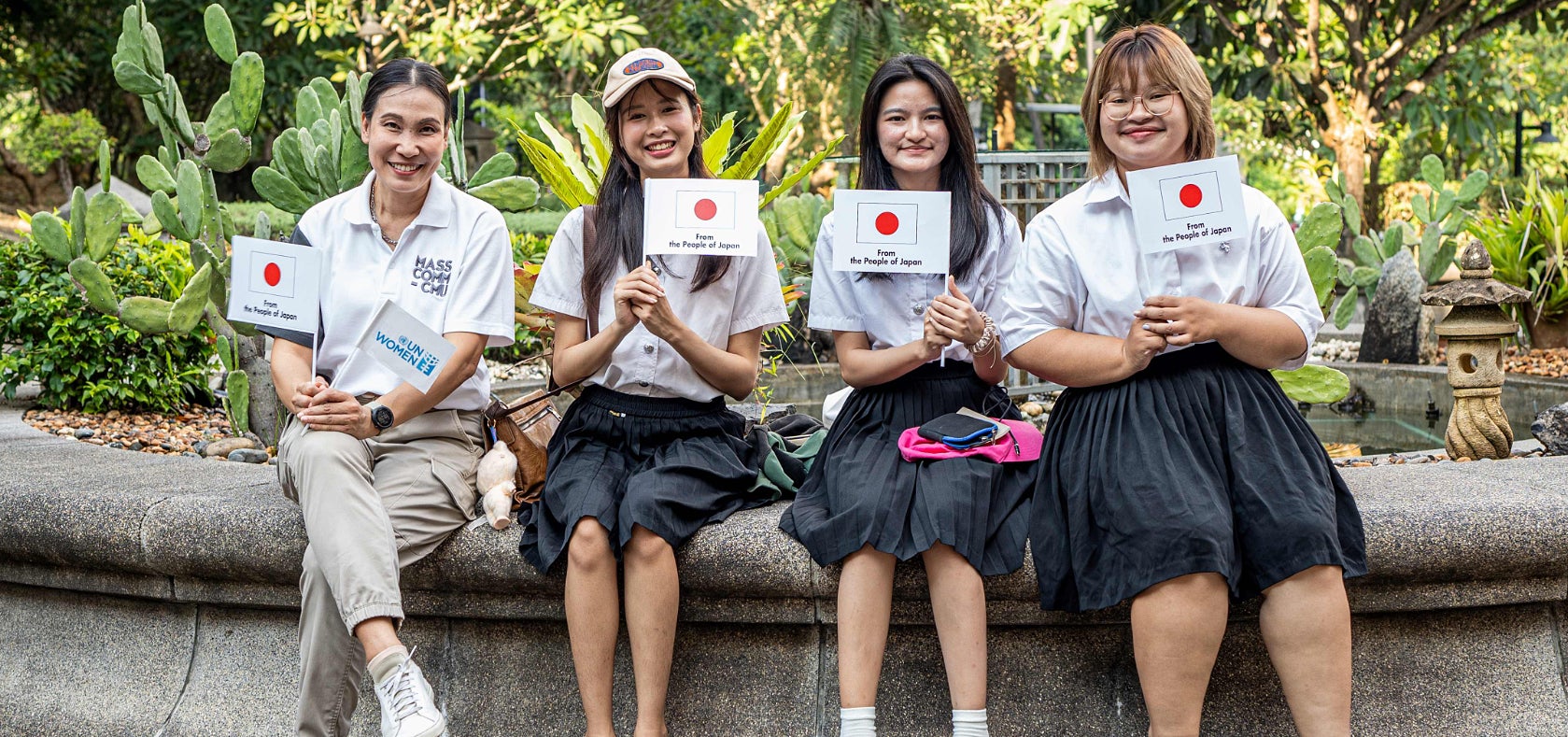
“Human trafficking has many layers that connect this issue to different parts of society, yet most are hidden below the surface, like an iceberg,” says Alicha Treerotchananon, PhD and Assistant Professor in the Faculty of Mass Communication at Chiang Mai University.
“Getting students involved in this issue is allowing them to really value human beings as equals and understand that no one should be exploited. University is the shortest road that connects the classroom to the real world, so when students gain knowledge about the complexities of trafficking and how it reaches into society, they see that they must influence future solutions,” she adds.
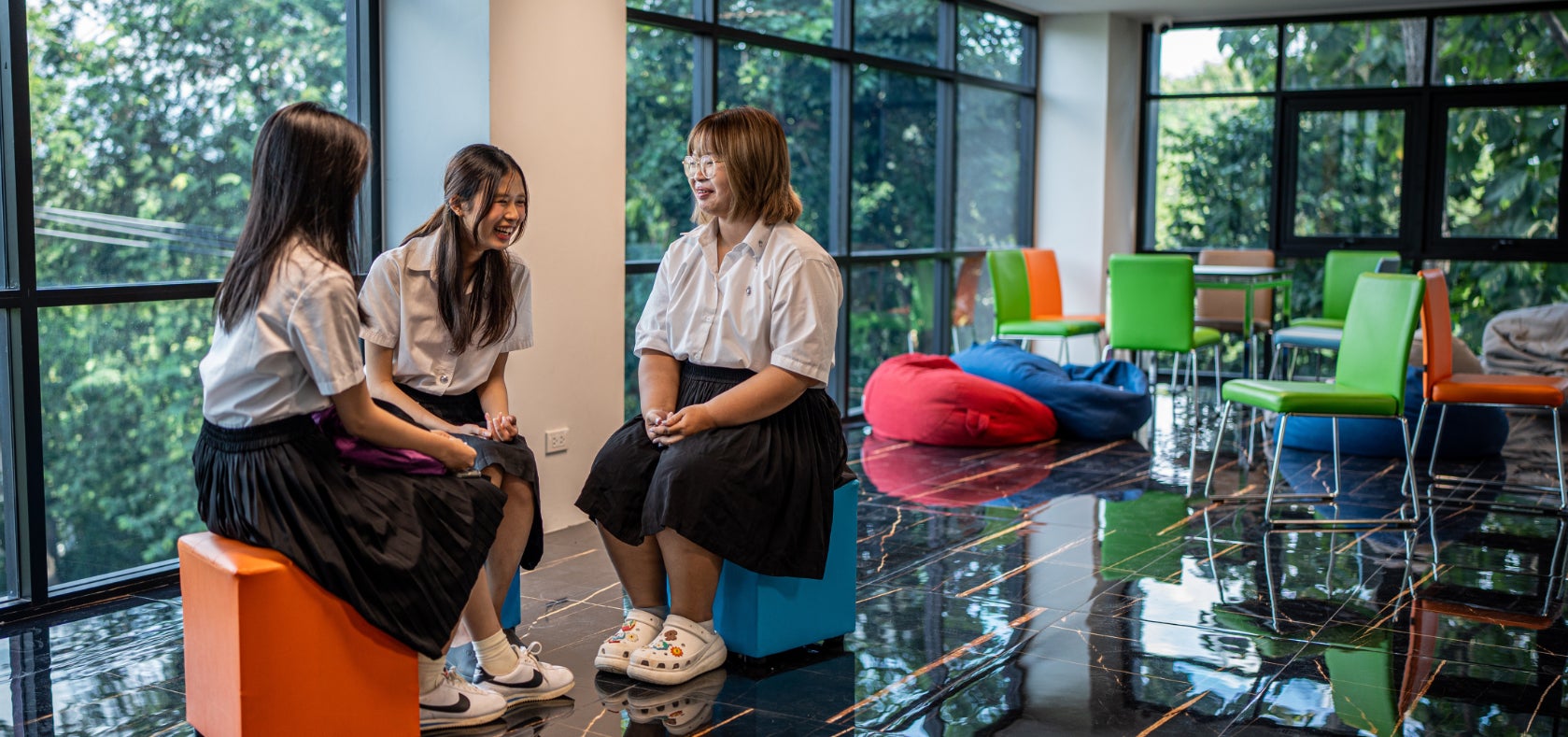
Satang reflects that youth can lead the movement for solutions to trafficking for forced criminality, saying: “Our small actions, such as sharing a post, can create ripples of awareness, preventing the reach of trafficking. For anyone interested in joining this vital cause, the message is clear: start now.”
This initiative was made possible through the support of the Government of Japan.
More information
- Trafficking in Persons
- Safe Path game: edu-tainment targeting youth (available in English, Thai, Burmese)
- UN Women Research Brief: Women, Peace and Digital (In)Security in South-East Asia – Reflections on Diverse Experiences in the Digital Sphere
- At a Glance: Women, Peace and Security: Addressing Cross-border Challenges